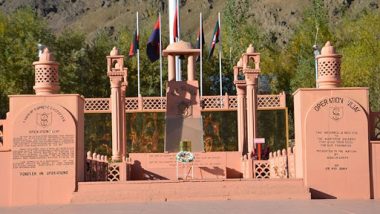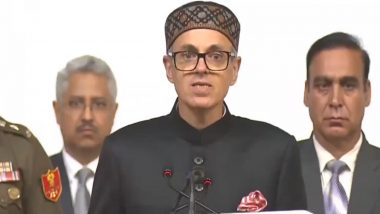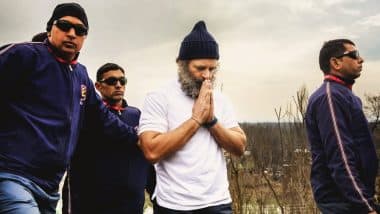The Kargil War was fought between India and Pakistan on the mountains in Kargil district of Jammu and Kashmir. The Kargil war took place between May 3 and July 26, 1999, along the Line of Control (LoC) after regular Pakistani Army soldiers disguised as terrorists occupied the Indian posts during the summer of 1999. The operation carried out by the Indian Army to wipe out the Infiltrators from the Indian side of the LoC is named as “Operation Vijay”. The operation was declared success on July 26, 1999. Every year on this day "Kargil Vijay Diwas” is celebrated. Kargil Vijay Diwas 2019: Date And Significance of the Day to Commemorate the Sacrifices of the 1999 Kargil War Heroes.
It is generally an untold tradition between both the countries that their armies leave their bunkers at high altitude terrain of more than 15,000 feet to lower heights during winters. They reoccupy their bunkers during summers. But in 1999, terrorists and Pakistan army soldiers occupied the Indian bunkers. When in May the Indian Army came to know about the infiltration, it launched Operation Vijay to reoccupy the bunkers. The primary purpose of Pakistan was to cut the connectivity of Leh with rest of India by controlling NH 1 highway. 'Kargil Vijay Diwas': BSF to Hold 7-Day-Long Celebrations to Mark 20th Anniversary of India's Victory Over Pakistan in 1999 War.
In the early May, an Army team led by Captain Saurabh Kalia went on patrol after receiving information of Pakistani infiltration into the Indian side of the LoC was captured the infiltrators. When the force did not communicate with the missing patrol team, it launched the operation. Later, Pakistan sent back mutilated bodies of the officers and his soldiers. ITBP Kick Starts a Week-long Celebration Commemorating Kargil Vijay Diwas.
The war was fought at regimental and battalion level. The Indian Army mobilised around two lakh soldiers to recapture the occupied posts. The infiltrators not only equipped with small arms and grenade launchers but were also armed with mortars, artillery and anti-aircraft guns. The war was fought in Kargil and Dras regions of the Kashmir Valley. The Indian troops first targeted the strategically important Tiger Hill and Tololing complex in Dras, which dominated the Srinagar-Leh route. This was soon followed by the Batalik-Turtok sub-sector which provided access to Siachen Glacier. Kargil Vijay Diwas: Tri-Service Band Performance Postponed Due to Sheila Dikshit's Demise.
After the Indian Army succeeded in regaining control of the hills overlooking NH 1, it turned to drive the infiltrators back across the LoC. The Battle of Tololing, tilted the combat in India's favour. During Operation Vijay, India used Bofors FH-77B field howitzer. It played a vital role in India’s victory. Rajnath Singh to Visit Kargil Today on Kargil Vijay Diwas.
Indian Air Force (IAF) also launched “Operation Safed Sagar” to help the ground forces by conducting aerial attacks on the infiltrators. The IAF lost a MiG-27 strike aircraft piloted by Flt. Lt. Nachiketa, due to an engine failure, and a MiG-21 fighter piloted by Squadron Leader Ajay Ahuja which was shot down by the Pakistani army. Flt Lt Nachiketa was captured by the Pakistani forces but was later released. One Indian Mi-8 helicopter was also lost in the operation. President Ram Nath Kovind to Visit Kargil War Memorial on July 26.
Indian Army lost 527 soldiers including Captain Vikram Batra, Lieutenant Manoj Pandey, Major Rajesh Adhikari, Major Vivek Gupta and Captain Vijayant Thapar. More than 1,000 Indian soldiers were also injured in the conflict. Meanwhile, According to PML (N), Pakistan lost about 3,000 of their men which included both soldiers of Pakistani Army and terrorists.
(The above story first appeared on LatestLY on Jul 24, 2019 03:58 PM IST. For more news and updates on politics, world, sports, entertainment and lifestyle, log on to our website latestly.com).













 Quickly
Quickly





















